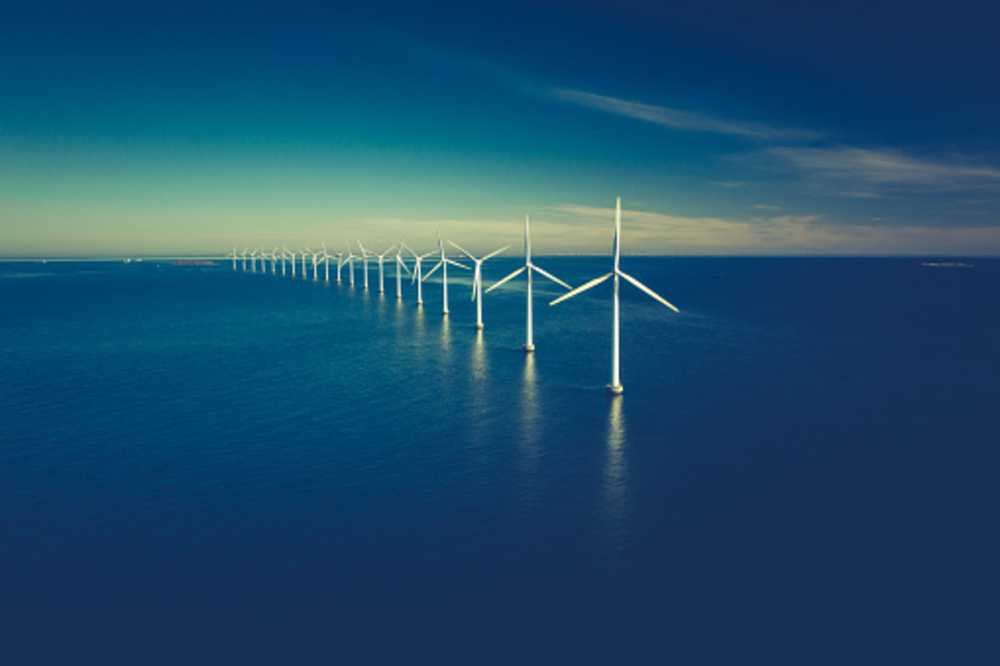A massive carbon capture project in the North Sea is being planned by the oil company BP. It is essential to Britain meeting its emissions targets. To assist the country in reaching its renewable energy targets, power company Orsted plans to construct one of its sizable offshore wind farms.
Due to a double reservation on the seabed, a compromise must happen.
Licensed territory for the wind farms overlaps
According to planning documents, the companies involved, and UK authorities, Britain granted preliminary licenses for both proposed projects more than a decade ago, when an overlap of roughly 110 sq km on the sea floor wasn’t considered an impassable barrier to either technology.
However, a conflict over dominance in this “Overlap Zone,” which includes the Hornsea Four wind farm and the Endurance carbon capture and storage (CCS) installations off the coast of Yorkshire, England, is currently escalating between BP and Orsted.
Turbines can cause the collision of boats
Studies that showed the danger of boats used to monitor carbon leakage colliding with wind turbines moored to the sea floor served as fuel for the standoff. The North Sea Transition Authority (NSTA), which oversees offshore energy production, came to the conclusion that, given the state of technology, significant crossings between such undertakings were not viable.
According to England’s Crown Estate licensing office, when the government issued the wind farm and CCS licenses in 2010 and 2011, respectively, it was unknown how the emerging technologies would advance.
Companies unwilling to make concessions over their wind farms
Both BP and Orsted say that making these concessions would harm their economic prospects and are unlikely to switch to the more expensive boat-free monitoring system.
According to the corporations involved and a North Sea green transition expert, this conflict, which has received little media attention, threatens to undermine Britain’s efforts to reach its climate targets. The capacity of Endurance alone might be responsible for at least half of the 20 to 30 million tons of CO2 per year that the country hopes to sequester by 2030.
If the UK is to meet its net-zero targets, it is imperative to resolve the conflict between renewable technologies. Also, it needs to have a fair process that determines whether a wind farm, carbon store, or another source of energy has priority in an area of overlap. This is a conclusion made by John Underhill, geoscientist and director of Aberdeen University’s Centre of Energy Transition.
Battle for the Overlap Zone won’t be easy
The British administration, which initially caused the problem, recognized the difficulty.
The government had set high targets for deploying offshore CCS and wind farms, which were both crucial to its attempts to achieve net-zero emissions by 2050. This is the highly unclear answer of the Department for Business, Energy, and Industry on the question of how two such projects could end up in the same location.
The Department for Business, Energy, and Industry added that the administration is aware that the coexistence may occasionally face technological difficulties. Such as now.
By the way, UK authorities established an offshore wind and CCS Group of regulators and industry leaders in 2021 to improve collaboration in an effort to resolve current problems and prevent new ones.
What happened to the coexistence of wind farms?
BP, Orsted, and Crown Estate told the media that they had been talking about coexistence issues for a while. Just they do not mention how their opinions on the dangers of technology overlap had changed during the previous ten years.
A group representing BP and its Northern Endurance Partnership (NEP) project partners submitted a study, which included an Orsted planning area document published by UK authorities on January 17 and in which the CCS system prohibited sharing the area.
According to the report by Net Zero Teesside, dated July 2022, it was first thought that Hornsea Project Four and the NEP Project might be able to coexist in the Overlap Zone. But after conducting a thorough examination, BP and its NEP partners came to the conclusion that coexistence with the whole Overlap Zone is not practical.
They blew optimism with the wind(farms)
In order for CO2 injection to begin at the project as scheduled in 2026, BP has voiced doubt that they can reach a solution in time. The company claims that it needs assurance over the fate of the zone before making a final investment decision.
In a March 2022 proposal to UK authorities, it stated that it was not realistic to expect any innovative, dependable, and robust solution to emerge within this or a comparable timeframe. In another application made in March 2022, NEP stated that if the risks associated with the project’s financial viability are high, it will be impossible to secure loan funding.
The planning materials for Hornsea Four said that a sparser turbine arrangement that could alleviate boat access concerns would decrease Hornsea Four’s yearly energy production by 2.5 percent.
This would result in the project being much less commercially competitive.
In support of Britain’s objective of boosting offshore wind capacity from 11 GW in 2021 to 50 GW by 2030, the plan is wind farm’s proposed capacity of 2.6 gigawatts (GW). It would need significant investment in the new offshore infrastructure in the North Sea.

